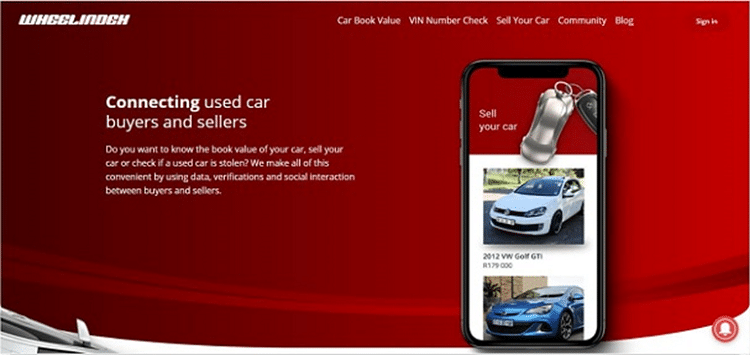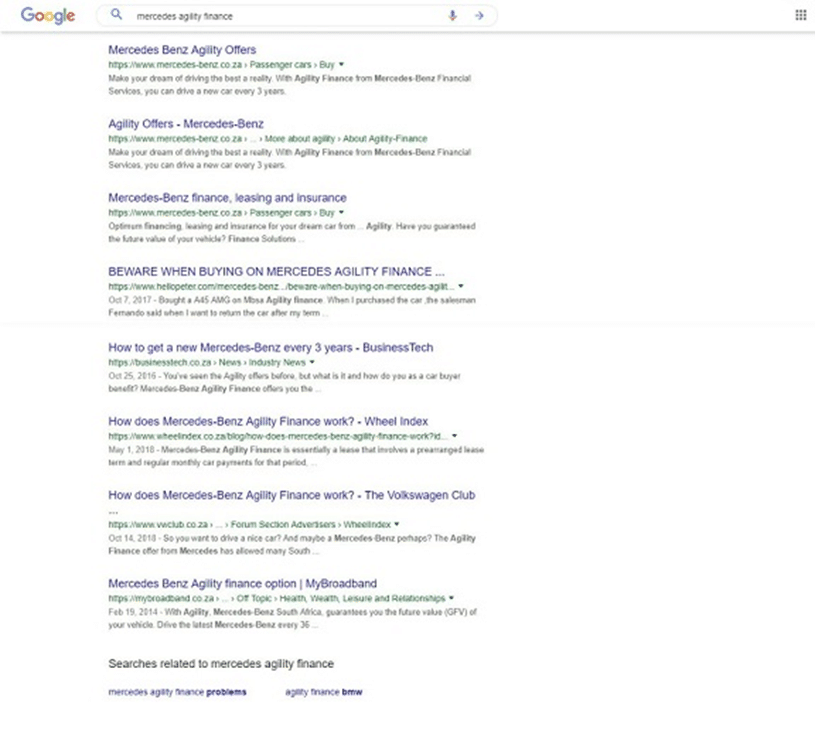SEO and Organic Ranking: A Case Study
TechsPlace | Online marketing seems to be all about Search Engine Optimisation (SEO) these days, but what exactly does that look like in practice? What are the expected results?
Organic SEO is what we’ll be focusing on in this case study, as opposed to technical SEO. Broadly defined, technical SEO is the web builder’s field of expertise. It refers to a designer building a site in such a manner as to identify with (typically) Google algorithms and preferences to render the site “attractive.”
Technical SEO makes your site conformist – and thus valuable – to a search engine, as a baseline build. Organic SEO is optimization applied to content to enable higher ranking by search engines. It deals with the initial and subsequent content on a website post-launch.
An SEO Case Study
Let’s look at a foreign start-up, Wheel Index, that’s managed to organically rank on the first Google Search Results Page (SRP) in a very short time period. Not yet three years old, the company product is a car evaluation tool, purchased by regular (dealerships) or once-off (retail) clients online. By simply entering a car’s vehicle identification number (VIN), a user can immediately glean any car’s current market value in a simple report. A more detailed report, which includes current resale value, police clearance, and even a service history, is also available.

During 2018 Wheel Index started ranking high on the first Google results page in various consumer searches. The company prioritized organic growth, as they lacked a budget for aggressive TV or other advertising. The Wheel Index blog library is a shining example of what classic SEO is all about. Unlike technical SEO, organic SEO is concerned with content and its ability to position one in search engine rankings. In stripping out the details of how Wheel Index applied SEO to become a prominent page one presence, a few things become apparent.
Essential SEO Tools
SEO has become complex and persistently nuanced. Many businesses call on small business IT support for the task of ranking online. For a typical company site – where relevant and evergreen content is regularly uploaded – a few tools become obvious choices when competing for SRP ranking. BuzzSumo is one such app, as it allows users to view current high-ranking search keywords, phrases and thus topics for consideration. A blogger will employ BuzzSumo to pinpoint hot topics to weave into a blog post. This is enacted by considerations of relevance, consumer pain-points, and an encapsulating title that will pop up in SRPs.
In the Wheel Index example, consumer issues frequently cropped up on BuzzSumo in the form of queries around car finance and road user legislation. These issues were then used to craft specific articles, utilizing the keywords and searches that BuzzSumo identified as frequently worded requests by consumers. The intel gleaned here can also be narrowed down by country, and further refined to be highly relevant to a company’s target market.
Similar but somewhat different, SEMrush is another tool SEO practitioners utilize. Here a blogger can see the keyword strategy employed by their competition, audit their own blog’s SEO value, and spot potential backlinks – all important aspects of one’s value to Google. Between both tools (or others like them), a blogger can commence crafting content knowing that the topic, keywords, and headings to be employed are already going to rank highly with search engines.
Essential SEO Practices
Remember, it might take a few weeks or even months to rank on the first returned search page, but that’s the nature of SEO. It’s ongoing and dynamic – search engines tweak their inner workings all the time. Looking again at the Wheel Index blog page, we can see the following SEO essentials at play:
- Rework an old domain rather than starting from scratch with a new site. New sites start at the bottom, whereas your old domain already has credibility in Google’s eyes.
- Keywords with relevance are on-point to capture consumer queries online. Keyword stuffing has been given a bad name, but there’s a fine line between insufficient use of a keyword and overdoing it. Wheel Index employs a principal keyword around 25 times in an average 1,000-word blog post, and secondary keywords 10 times or more. This is really where professional writing ability comes in, as one wants to decidedly punt a keyword or two, while also masking it within a typically chatty and engaging tone throughout the post. It’s a balance of repeated word use and good language practice.
- Keywords should be localized and always narrowed down to relevant consumer search intel that applies to your own target market as far as possible.
- Headings and subheadings should all contain the relevant keyword or words, as do the headings in this article, for example, where “SEO” is paramount as a keyword. Hot tip: Employ keywords in the titles of any pictures or graphics added to a post via your Content Management System (CMS). While the title of a pic might not display, Google will still pick it up and add it to your site’s credibility.
- Bulleted or numbered lists are attractive to the Google engine, as they imply short facts presented succinctly – great for “how to” articles and fast dissemination of information.
- HTML in tags and meta description is important too, just as it is with headings and subheadings. Old posts should be checked for this optimization, as Wheel Index did on about half of their older posts during 2018. This carries over to a blog post’s URL too, where each post is a great opportunity to generate a thoroughly keyword-optimized URL.
- Backlinks and inbound links are important. Backlinks are links to external sources – preferably similar content or other authoritative sites. Inbound links keep users onsite and cross-reference your own site’s content. Both are important for Google to rank a site well, and we can see that the Wheel Index consistently linked to their own blog information, as well as providing external snippets via a hyperlink. Hot tip: Backlinking can be a barter arena. Even without a budget, companies can usually trade backlinks with relevant entities for mutual benefit. It just takes persistent inquiry.
- Anchor text is text hyperlinked to another site. Don’t say “click here,” but rather craft a semantically seamless and logical link to external or internal links with clever anchor text, preferably containing the keyword (in the anchor text and the heading of the linked article).
- Consistency counts. Regularity might be a better term, but the point is that regular, well thought out and composed blog posts impress Google to no end, as opposed to erratic contributions. The more genuinely valuable information you regularly post, the more attractive you become in a search.
The First SEO Essentials, Last
Before any formulation of keyword lists or article topics even begins, competent SEO practitioners must understand what consumers are looking for, and what they’re excited or complaining about. The “speak” -or the types of phrases consumers employ around an issue – are important. Wesbank is the leading vehicle financier in South Africa, where Wheel Index is based. For example, then, typing in “how does wesbank finance work” (a prominent search) pulls Wheel Index up on page one. In fact, the company appears right behind Wesbank itself, a quite remarkable state of affairs for a cheeky start-up.

Similarly, Mercedes is a popular brand in that country. Mercedes’ in-house finance is known as “Agility Finance” in South Africa. As the snapshot below shows, even a relatively blunt consumer search of “Mercedes agility finance” pops Wheel Index on the first page again. Both of these instances are the result of careful homework, blog crafting, and attention to all possible nooks and crannies where SEO might be applied. Where organic growth is your best bet for business growth, SEO essentially emulates word of mouth.

As can be seen – especially in the absence of a giant marketing budget – thoughtful SEO application can go a long way in increasing your company or blog’s visibility. In the Mercedes finance snapshot, Google returned a total of 725,000 results. That a start-up can be ranking on the first page, directly behind the service providers themselves – and both are rather large, impressive companies – and within such a short space of time, shows just how valuable professionally applied SEO can be.
This article is contributed by guest author on techsplace.com.





